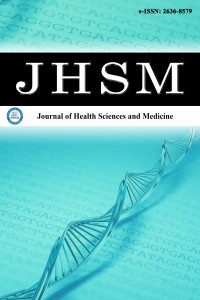1.
American Diabetes Association Professional Practice Committee. 2. Classification and diagnosis of diabetes: standards of medical care in diabetes-2022. Diabetes Care. 2022;45(Suppl 1):S17-S38. doi:10.2337/dc22-S002
2.
Cundy T, Ackermann E, Ryan EA. Gestational diabetes: new criteria may triple the prevalence but effect on outcomes is unclear. BMJ. 2014; 348:g1567. doi:10.1136/bmj.g1567
3.
Frequency of gestational diabetes mellitus at collaborating centers based on iadpsg consensus panel-recommended criteria |diabetes care| American Diabetes Association. Accessed January 27, 2025. https://diabetesjournals.org/care/article/35/3/526/28610/Frequency-of-Gestational-Diabetes-Mellitus-at
4.
Bellamy L, Casas JP, Hingorani AD, Williams D. Type 2 diabetes mellitus after gestational diabetes: a systematic review and meta-analysis. Lancet. 2009;373(9677):1773-1779. doi:10.1016/S0140-6736(09)60731-5
5.
Kramer CK, Campbell S, Retnakaran R. Gestational diabetes and the risk of cardiovascular disease in women: a systematic review and meta-analysis. Diabetologia. 2019;62(6):905-914. doi:10.1007/s00125-019-4840-2
6.
Gestational diabetes mellitus and renal function: a prospective study with 9- to 16-year follow-up after pregnancy |diabetes care| American Diabetes Association. Accessed January 27, 2025. https://diabetesjournals.org/care/article/41/7/1378/36429/Gestational-Diabetes-Mellitus-and-Renal-Function-A
7.
Metabolic syndrome in childhood: association with birth weight, maternal obesity, and gestational diabetes mellitus |pediatrics| American Academy of Pediatrics. Accessed January 27, 2025. https://publications.aap.org/pediatrics/article-abstract/115/3/e290/67224/Metabolic-Syndrome-in-Childhood-Association-With
8.
Billionnet C, Mitanchez D, Weill A, et al. Gestational diabetes and adverse perinatal outcomes from 716,152 births in France in 2012. Diabetologia. 2017;60(4):636-644. doi:10.1007/s00125-017-4206-6
9.
Cheng YKY, Lao TT, Sahota DS, Leung VKT, Leung TY. Use of birth weight threshold for macrosomia to identify fetuses at risk of shoulder dystocia among Chinese populations. Int J Gynecol Obstetr. 2013;120(3): 249-253. doi:10.1016/j.ijgo.2012.10.019
10.
Neonatal hypoglycemia following diet-controlled and insulin-treated gestational diabetes mellitus |diabetes care| American Diabetes Association. Accessed January 27, 2025. https://diabetesjournals.org/care/article/41/7/1385/36453/Neonatal-Hypoglycemia-Following-Diet-Controlled
11.
Ford HL, Champion I, Wan A, Reddy M, Mol BW, Rolnik DL. Predictors for insulin use in gestational diabetes mellitus. Eur J Obstetr Gynecol Reproduct Biol. 2022;272:177-181. doi:10.1016/j.ejogrb.2022.03.025
12.
Insulin therapy and fetoplacental vascular function in gestational diabetes mellitus-Sobrevia-2015-experimental physiology-Wiley Online Library. Accessed January 27, 2025. https://physoc.onlinelibrary.wiley.com/doi/full/10.1113/expphysiol.2014.082743
13.
Tamagawa M, Kasuga Y, Saisho Y, et al. Predictors of later insulin therapy for gestational diabetes diagnosed in early pregnancy. Endocrine J. 2021;68(11):1321-1328. doi:10.1507/endocrj.EJ21-0118
14.
Mitra S, Nayak PK, Sahoo J, et al. Predictors for antenatal insulin requirement in gestational diabetes. Gynecol Endocrinol. 2014;30(8):565-568. doi:10.3109/09513590.2014.911274
15.
Metzger BE, Gabbe SG, Persson B, et al. International association of diabetes and pregnancy study groups recommendations on the diagnosis and classification of hyperglycemia in pregnancy: response to weinert. Diabetes Care. 2010;33(7):e98. doi:10.2337/dc10-0719
16.
Huhn EA, Massaro N, Streckeisen S, et al. Fourfold increase in prevalence of gestational diabetes mellitus after adoption of the new International Association of Diabetes and Pregnancy Study Groups (IADPSG) criteria. J Perinat Med. 2017;45(3):359-366. doi:10.1515/jpm-2016-0099
17.
Wu ET, Nien FJ, Kuo CH, et al. Diagnosis of more gestational diabetes lead to better pregnancy outcomes: Comparing the International Association of the Diabetes and Pregnancy Study Group criteria, and the Carpenter and Coustan criteria. J Diabet Investigat. 2016;7(1):121-126. doi:10.1111/jdi.12378
18.
Duran A, Sáenz S, Torrejón MJ, et al. Introduction of IADPSG criteria for the screening and diagnosis of gestational diabetes mellitus results in improved pregnancy outcomes at a lower cost in a large cohort of pregnant women: the St. Carlos gestational diabetes study. Diabetes Care. 2014;37(9):2442-2450. doi:10.2337/dc14-0179
19.
Feldman RK, Tieu RS, Yasumura L. Gestational diabetes screening: the International Association of the Diabetes and Pregnancy Study Groups compared with Carpenter-Coustan screening. Obstetr Gynecol. 2016; 127(1):10. doi:10.1097/AOG.0000000000001132
20.
ACOG clinical practice update: screening for gestational and pregestational diabetes in pregnancy and postpartum. Obstetri Gynecol. 2024;144(1): e20. doi:10.1097/AOG.0000000000005612
21.
American Diabetes Association. Diagnosis and classification of diabetes mellitus. Diabetes Care. 2013;36(Suppl 1):S67-S74. doi:10.2337/dc13-S067
22.
Standards of Medical Care in Diabetes-2014 |diabetes care| American Diabetes Association. Accessed January 29, 2025. https://diabetesjournals. org/care/article/37/Supplement_1/S14/37696/Standards-of-Medical-Care-in-Diabetes-2014
23.
Çelik Ö. Gestasyonel diyabet tanı ve tedavisi. Klin Tıp Bil. 2019;7(3):24-27.
24.
Milosevic D, Panin VL. Relationship between hematological parameters and glycemic control in type 2 diabetes mellitus patients. J Med Biochem. 2019;38(2):164-171. doi:10.2478/jomb-2018-0021
25.
Demirtas L, Degirmenci H, Akbas EM, et al. Association of hematological indicies with diabetes, impaired glucose regulation and microvascular complications of diabetes. Int J Clin Exp Med. 2015;8(7):11420-11427.
26.
Jindal S, Gupta S, Gupta R, et al. Platelet indices in diabetes mellitus: indicators of diabetic microvascular complications. Hematology. 2011; 16(2):86-89. doi:10.1179/102453311X12902908412110
27.
Mandic-Markovic V, Dobrijevic Z, Robajac D, et al. Biochemical markers in the prediction of pregnancy outcome in gestational diabetes mellitus. Medicina (Kaunas). 2024;60(8):1250. doi:10.3390/medicina60081250
28.
Xiang LL, Chen C, Wang QY, Zhu YT, Chen YJ, Zeng Y. Impact of inflammatory factors, hemoglobin A1c, and platelet parameters in gestational diabetes mellitus. Arch Gynecol Obstet. 2023;307(2):439-446. doi:10.1007/s00404-022-06528-x
29.
Tonguc M, Tayyar AT, Muderris I, Bayram F, Muhtaroglu S, Tayyar M. An evaluation of two different screening criteria in gestational diabetes mellitus. J Matern Fetal Neonatal Med. 2018;31(9):1188-1193. doi:10.1080/ 14767058.2017.1311858
30.
Olagbuji BN, Atiba AS, Olofinbiyi BA, et al. Prevalence of and risk factors for gestational diabetes using 1999, 2013 WHO and IADPSG criteria upon implementation of a universal one-step screening and diagnostic strategy in a sub-Saharan African population. Eur J Obstet Gynecol Reprod Biol. 2015;189:27-32. doi:10.1016/j.ejogrb.2015.02.030
31.
Helseth R, Salvesen O, Stafne SN, Mørkved S, Salvesen KA, Carlsen SM. Gestational diabetes mellitus among Nordic Caucasian women: prevalence and risk factors according to WHO and simplified IADPSG criteria. Scand J Clin Lab Invest. 2014;74(7):620-628. doi:10.3109/00365513.2014.928942
32.
Can Common Clinical Parameters Be Used to identify patients who will need insulin treatment in gestational diabetes mellitus? |Diabetes care| American Diabetes Association. Accessed January 29, 2025. https://diabetesjournals.org/care/article/34/10/2214/27027/Can-Common-Clinical-Parameters-Be-Used-to-Identify
33.
Yanagisawa K, Muraoka M, Takagi K, et al. Assessment of predictors of insulin therapy in patients with gestational diabetes diagnosed according to the IADPSG criteria. Diabetol Int. 2016;7(4):440-446. doi: 10.1007/s13340-016-0272-0
34.
Coustan DR, Lowe LP, Metzger BE, Dyer AR, International Association of Diabetes and Pregnancy Study Groups. The hyperglycemia and adverse pregnancy outcome (HAPO) study: paving the way for new diagnostic criteria for gestational diabetes mellitus. Am J Obstet Gynecol. 2010;202(6):654.e1-6. doi:10.1016/j.ajog.2010.04.006
35.
Li KT, Naik S, Alexander M, Mathad JS. Screening and diagnosis of gestational diabetes in India: a systematic review and meta-analysis. Acta Diabetol. 2018;55(6):613-625. doi:10.1007/s00592-018-1131-1
36.
Saeedi M, Cao Y, Fadl H, Gustafson H, Simmons D. Increasing prevalence of gestational diabetes mellitus when implementing the IADPSG criteria: a systematic review and meta-analysis. Diabetes Res Clin Pract. 2021;172:108642. doi:10.1016/j.diabres.2020.108642
37.
Sina M, Cade TJ, Flack J, et al. Antenatal models of care for women with gestational diabetes mellitus: vignettes from an international meeting. Austral New Zealand J Obstetr Gynaecol. 2020;60(5):720-728. doi:10. 1111/ajo.13144

